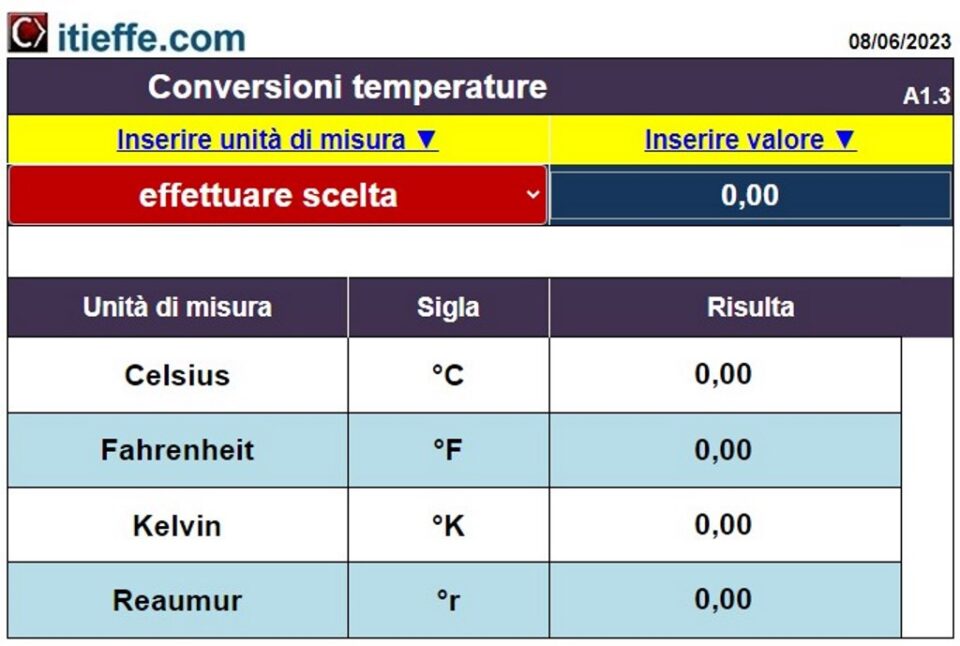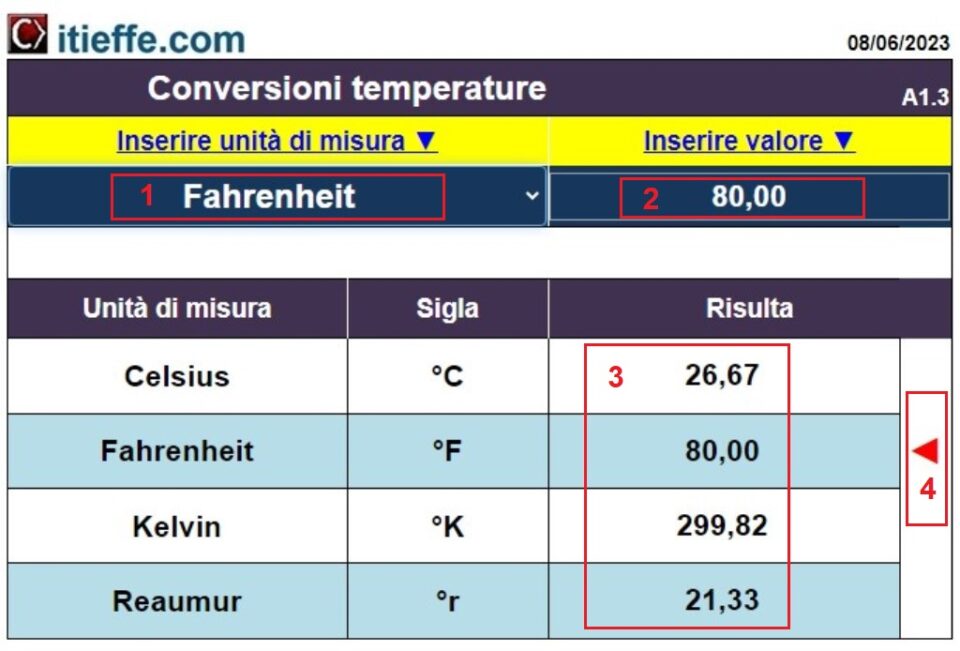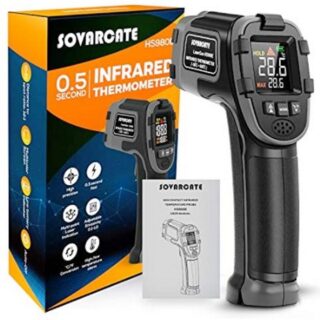Temperature conversion

Simultaneous conversion of all values. By indicating one quantity you immediately have the value of all the others – Enter the known value in the corresponding cell and press enter
In the vast world of science, engineering and everyday applications, temperature is one of the most fundamental and universal parameters. Its influence is felt in every aspect of life, from heating technology to cooking food to the design of jet engines, from the chemical industry to space research.
However, due to the different temperature scales used around the world and in different contexts, the need may arise to convert temperature values from one system to another, in order to ensure accurate communication and shared understanding.
With this program we will see how simple it is to convert any unit of measurement of temperature, directly into all the others, offering an overview of the results.
Temperature conversions
Online calculator for measuring unit - temperature conversion
By indicating one quantity, one immediately has the value of all the others at the same time
Instructions

How to proceed
1 – Choose the unit of measurement (box 1),
2 – enter the value (box 2),
press enter or click inside the program.
3 – the conversions made will be displayed immediately (box 3).
4 – The arrow indicates the chosen unit of measurement
Insights
The most used unit of temperature is the degree centigrade or degree Celsius proposed by the Swedish astronomer A. Celsius (1701 - 1744). The degree is the hundredth part of the thermometric scale, obtained by setting the temperature of melting ice at 0 ° C and at 100 ° that of boiling water.
Besides the Celsius scale there are two other scales, the Réaumur used in France, and the Fahrenheit scale used in Anglo-Saxon countries.
|
Matches: |
To convert from ° C to ° F multiply by 9, divide the result by 5 and add 32. | |
| CELSIUS 0 ° C 100 ° C | ||
| REAUMUR 0 ° r 80 ° r | ||
| FAHRENHEIT 32 ° F 212 ° F | ||
| RANKINE 491,7 ° R - 671,7 ° R | No longer used | To convert from ° F to ° C subtract 32, multiply the result by 5 and divide by 9. |
| NEWTON 737,6 ° N - 1041 ° N | No longer used | |
| RØMER 7,5 ° ro - 60 ° ro | No longer used | |
| DELISLE 150 ° D - 0 ° D | No longer used | |
Kelvin scale
Absolute zero was used for the determination of a temperature scale known as the Kelvin scale. Absolute zero - 273.15 ° represents the lower limit, while an altro fixed point is the triple point of water.
This point is determined by the coexistence of the three states of water, such as: ice, liquid and vapor; it is located at 0.01 ° C, and corresponds to 273.16 ° Kelvin. The scale was created by Lord William Thomson Kelvin (1824-1907) an Irish mathematician and physicist.
The discovery of absolute zero dates back to 1702 by a French physicist, Guillaume Amontons. Of course, the reasoning that led the physicist to such an intuition was purely theoretical, given the scarce technology available at the time.
In nature, the minimum detectable temperature is -273 ° C, detectable in intergalactic spaces, also defined as the background temperature of the Universe.
Note that the "comma 15" is missing at this temperature. In fact, if we consider heat as a molecular movement, we can therefore subtract it to the point of considerably slowing down this agitation, but it is absolutely impossible to stop it.
This would be contrary to the Third Principle of Thermodynamics which states that a system cannot completely lose the energy it possesses.
The interval of one kelvin is therefore equal to the interval of one degree Celsius. Given the difficulty of taking into account precisely the atmospheric pressure, it was preferred (1954), to define the temperature, to refer to the triple point of water.
Remember that the triple point is made with a cell consisting of a sealed glass ampoule containing distilled water, from which the air is removed.
In the presence of the three phases, solid, liquid and vapor, the pressure is 610 Pa and the temperature is 0,01 ° C or 273,16 K (one hundredth of a degree higher than the solidification temperature at normal pressure).
By the GFCM in 1960 the International Practical Temperature Scale (IPTS) was defined, which fixes the temperatures, as well as the triple point of water, of another 11 fixed points.
Other free programs of the same kind offered by itieffe ▼
Temperature conversions
The program below is free to use.
To access the reserved version (see below), full page and without advertising, you must be registered.
You can register now by clicking HERE

